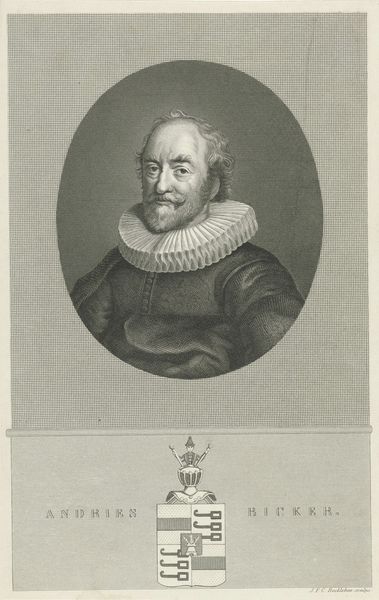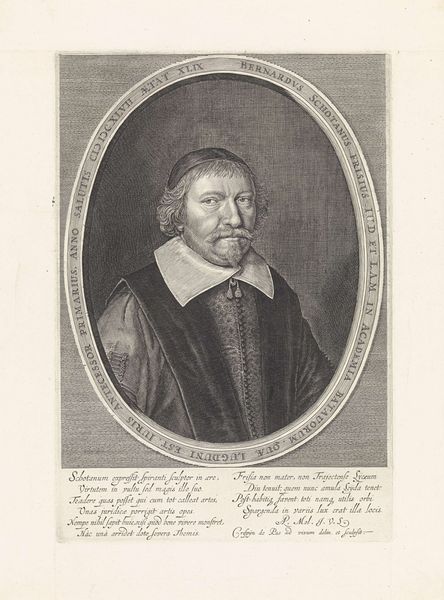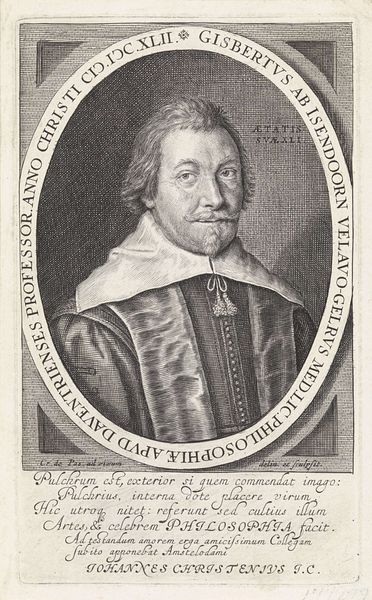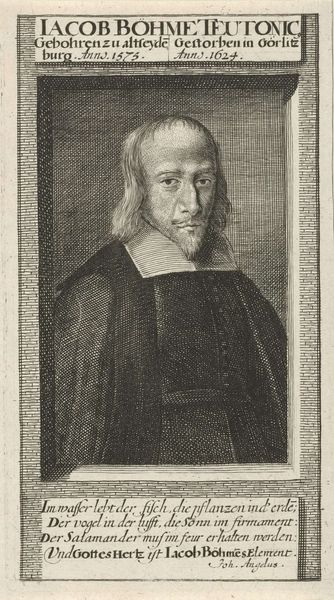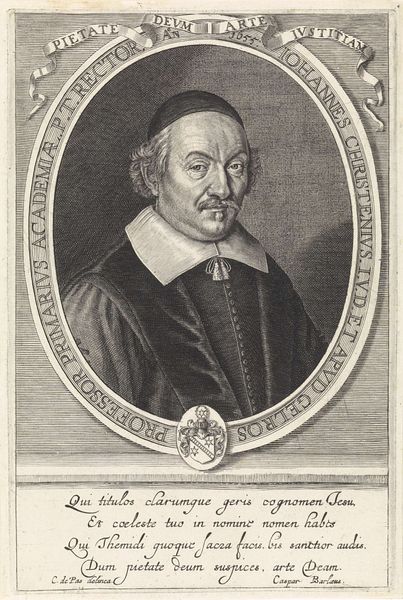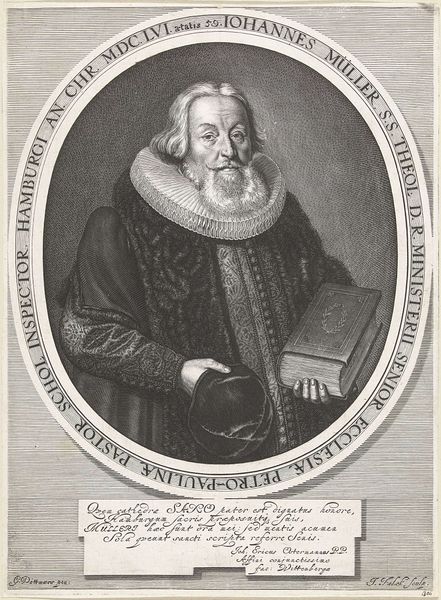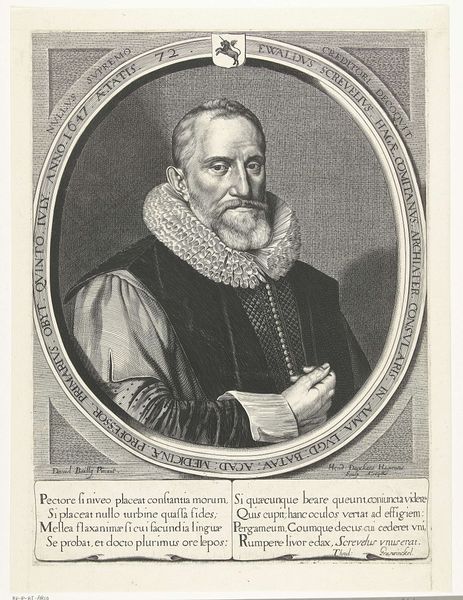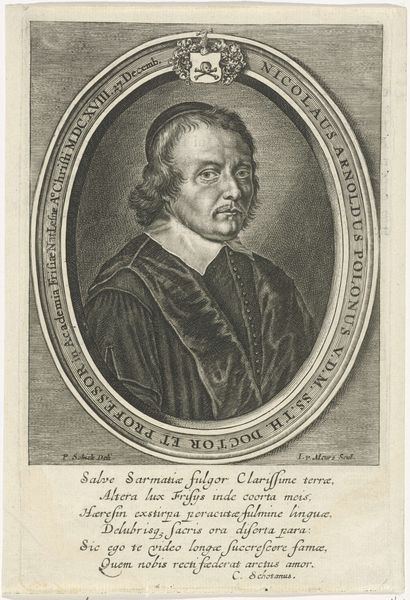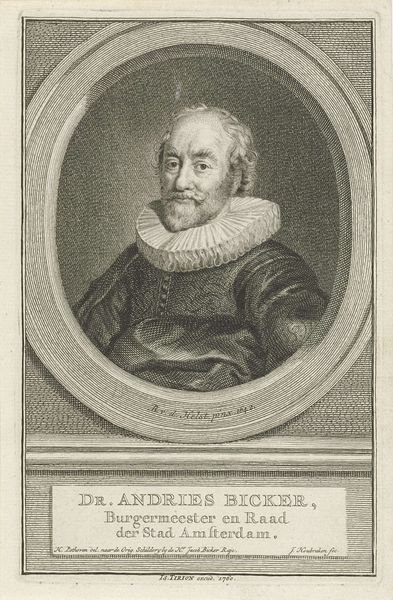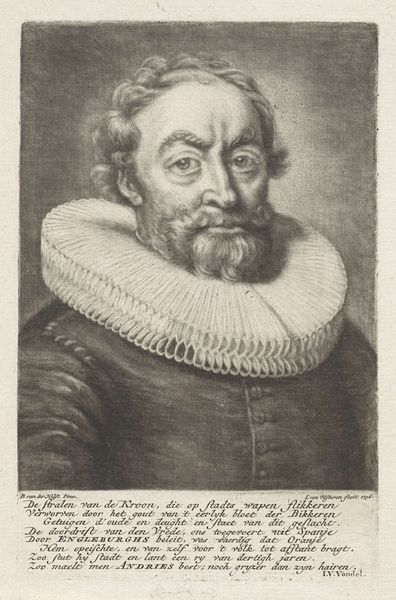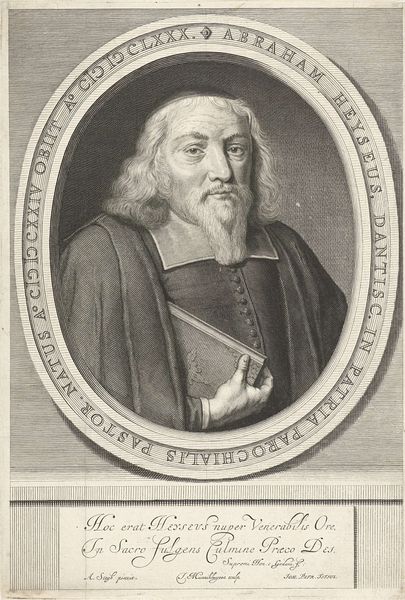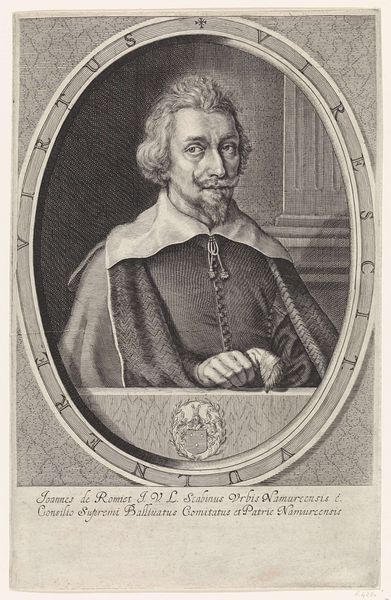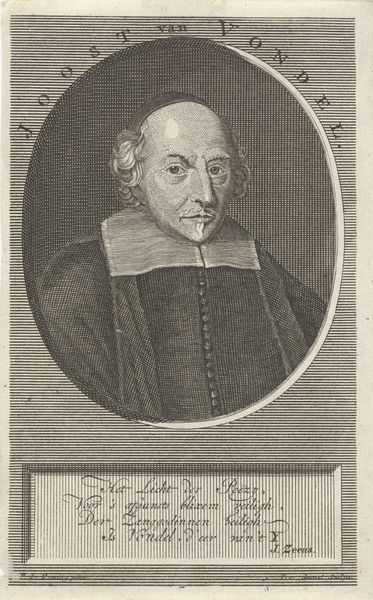
engraving
#
portrait
#
baroque
#
history-painting
#
engraving
Dimensions: height 263 mm, width 170 mm
Copyright: Rijks Museum: Open Domain
Curator: This is a portrait of Johann Mochinger by Jeremias Falck, created sometime between 1646 and 1677. It’s an engraving. Editor: Somber. The shading, the heavy brow—it communicates seriousness, perhaps even severity. I’m struck by the incredibly detailed rendering of his face. Curator: It’s fascinating how portraiture functioned then. Consider the role of powerful individuals and how their images were circulated. Engravings allowed for wider dissemination of likeness and therefore influence. Editor: The composition directs my gaze immediately to his hands. The fine detail creates texture that contrasts so sharply with the flat background behind him. Are the hands symbolic here? Curator: Hands in portraits often represent status and the individual’s abilities. Mochinger was a prominent figure, so the carefully rendered hands possibly denote control and capability within his sphere of influence. The Baroque era, which influences the work, really relished in a sense of the theatrical. Editor: Look at the angle of the light as it hits his collar—it highlights the intricate lines. Even though it is black and white the details feel vibrant, like one continuous contour almost giving a lively emotion. Curator: And those are crucial for understanding his presentation to the public. There's a carefully constructed persona meant to project authority and gravitas in a period defined by immense political and religious upheaval. These were visual cues in a world obsessed with hierarchy. Editor: It's truly impressive how Falck has managed to convey such texture with what must have been very deliberate mark making to simulate light. The gaze definitely has an effect; those details of his eye suggest the Baroque focus on drama. Curator: Precisely. Thinking about the context, what this image meant to viewers at the time and even tells us about societal values during the seventeenth century provides a more well-rounded perception of the engraving. Editor: Indeed, the meticulousness reveals a kind of focused observation, not only artistically, but it communicates how his influence must have affected the community. It reveals something timeless.
Comments
No comments
Be the first to comment and join the conversation on the ultimate creative platform.
